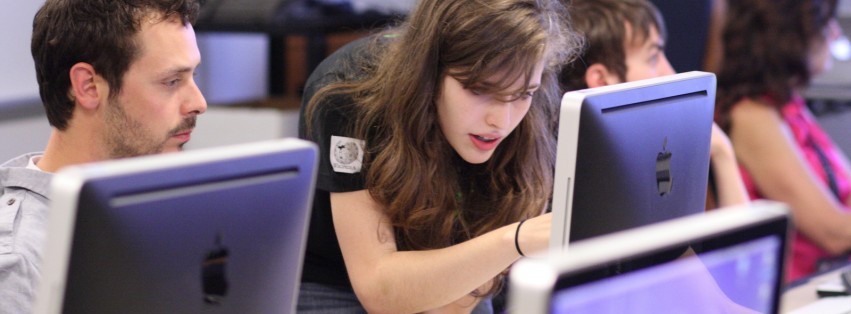
Each new Higher Ed IT implementation presents the challenge of balancing the unique needs of each type of user with the needs of the institution as a whole. You can’t always please everyone, but with the right communication channels, your team can do their best to create a product that meets the expectations of as many faculty, staff, and students as possible. Proper communication isn’t just about engaging with users on new implementations or training them to use new technology, however; it is just as important to listen to your user base about how technology can help improve their experiences on campus.
This past summer we had the pleasure to sit down with Melissa Pacheco and Tobias “Toby” Stapleton from the University of Massachusetts, Dartmouth to discuss their thoughts on technology in Higher Ed. We also sent out survey questions to faculty members on social media to hear from part of the user base that is traditionally less involved in IT implementations. The responses we received brought up many important topics, providing insight into what Higher Ed users expect from IT projects as technology advances and new challenges arise.
Universities should be better utilizing social media to engage with prospective students, as well as those currently enrolled.
Melissa Pacheco, Senior Programs Specialist of the Charlton College of Business, told us that she thinks technology should be used to better engage with students, getting them to work together and become more active in the campus community. She explained that “everyone is getting glossy eyed over email and text alerts,” making it all the more important for universities to find new avenues to communicate and engage with students. Toby Stapleton, Director of the Center of Innovation and Entrepreneurship, had similar concerns, adding that university enrollment is one of the biggest issues facing Higher Ed. He suggested that universities should be better utilizing social media to engage with prospective students, as well as those currently enrolled.
While the future of university IT is a much-debated topic, there are a few key points that are largely agreed upon: in the next few years, universities will continue to improve user engagement through new technology, Ed-tech professionals will have to negotiate funding for new projects, and Higher Ed’s use of information technology will become progressively more optimized to accommodate for smaller budgets.
“Technology in Higher Ed needs to slow down” and become “increasingly invisible.”-university faculty member
What may be the most important discussion to have with your user base is how much colleges and universities should rely on new technology. For example, when asked how IT could improve Higher Ed, Stapleton told us that more technology is a must, specifically in how staff, administrators, and IT teams communicate. He expressed frustration over the fact that current procedures in Higher Ed give little wiggle room for attending meetings, explaining that “if you’re not physically at the meeting, you’re not at the meeting.” Video conferencing and other forms of communication beyond text and email could help alleviate this issue, Stapleton suggested. On the other hand, a university faculty member responded to our survey question with a very different perspective, writing that “technology in Higher Ed needs to slow down” and become “increasingly invisible.” They hoped that the future of university IT would focus more on making faculty members’ jobs easier, as well as making it easier for students to learn, rather than being innovative for the accolades of university administrators.
Pacheco predicted that the popularity of e-learning would not increase until programs are specifically designed to help get students more involved.
One of the most popular examples of technological advances in Higher Ed is the continued development of MOOCs. The faculty and staff we interviewed, however, seemed less than enthused about the highly publicized trend. While acknowledging that online courses create opportunities for those that aren’t as comfortable in the traditional classroom, Pacheco predicted that the popularity of e-learning would not increase until programs are specifically designed to help get students more involved. She expressed concerns about whether fully online courses were teaching the “essential learning skills” to help students succeed in their future careers. When asked about MOOCs, Stapleton drew on his experience in the private sector, explaining that “networking and interaction” are very important for many students studying business. He continued, saying that face-to-face courses can offer many learning opportunities that e-learning, in its current state, cannot provide. An anonymous faculty member was more open to the idea, writing that students “can truly learn online.” They then admitted, however, that the e-learning courses that they had taught did not resemble “a MOOC in any way, shape or hype.”
The future of technology in Higher Ed will no doubt be driven by innovation, but it’s important to remind ourselves that new does not necessarily equate to helpful. Sometimes the solution to a problem can be just a case of process improvement or optimization. It’s important to remember that, while new tech has the potential to have a huge impact on your institution, it’s essential to define your goal and figure out how technology can help get you there, not the other way around. Higher Ed is an intricate ecosystem of users, each with their own specific wants and needs for the technology they use every day, and it’s the goal of IT project teams to ensure that their products meets those needs.
Avoid costly mistakes and wasted time – talk to an impartial peer in Higher Ed!
There is nothing like speaking with a peer who has implemented the same product – send us a request.
You can also provide general feedback, inquire about additional free resources, submit a topic you’d like us to cover, tell us about a feature you’d like to see, or request the best staff for your project.